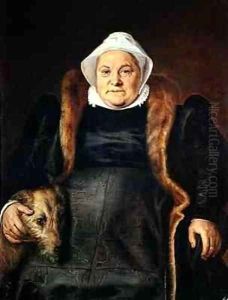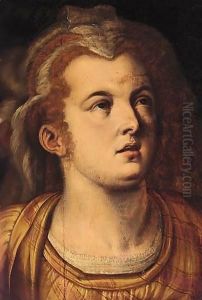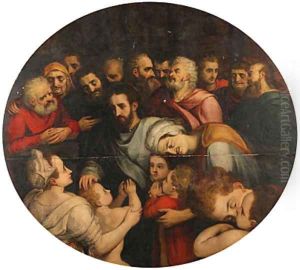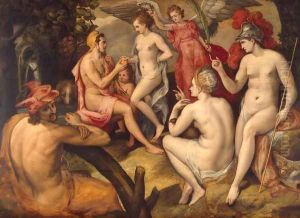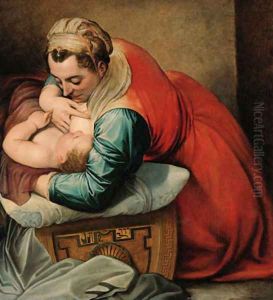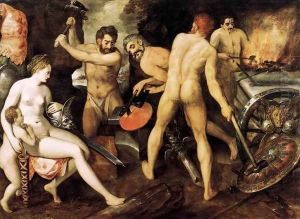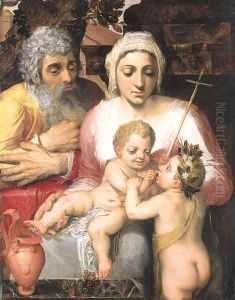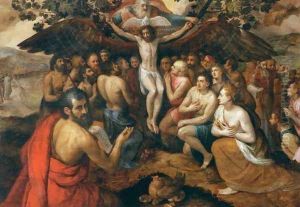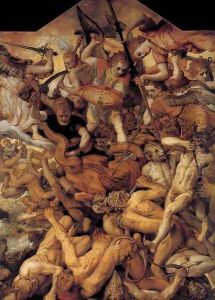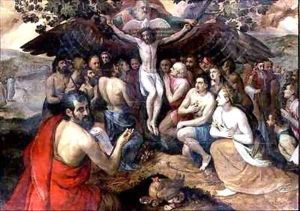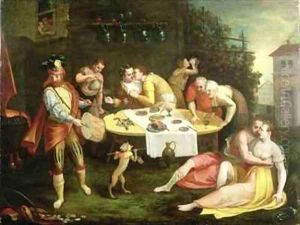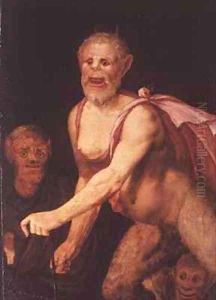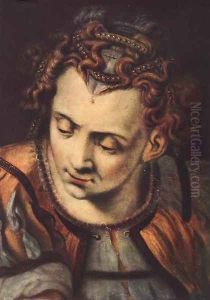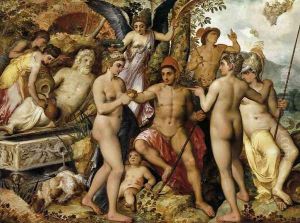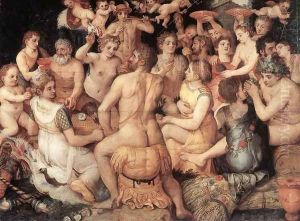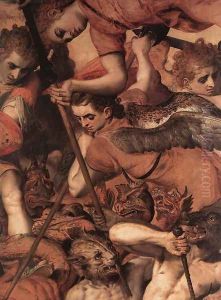Frans, the elder Floris Paintings
Frans Floris, also known as Frans de Vriendt or Frans Floris the Elder, was a prominent Flemish Renaissance painter, draughtsman, and designer of engravings. Born in Antwerp around 1519/1520, Floris was one of the leading figures in the Northern Renaissance who was influenced by his exposure to Italian art during his travels. He is particularly known for his history paintings and mythological scenes characterized by their dynamic composition and Mannerist style.
Floris received his initial artistic training from Lambert Lombard in Liège and later continued developing his skills in the workshop of Pieter Coecke van Aelst in Antwerp. His journey to Italy, where he studied the work of Michelangelo and other Italian masters, had a profound impact on his artistic approach. Upon returning to Antwerp, he established his own large workshop, which became one of the most influential in the city, training many artists who would later contribute to the Flemish art scene.
His style combined the robust, sculptural forms he observed in Italy with the vibrant color palette and detailed landscapes typical of the Flemish tradition. Floris was adept at large-scale compositions, and his paintings often featured numerous figures arranged in complex, dynamic poses. His work was characterized by a sense of movement and drama, making him a precursor to the Baroque style that would emerge in the following century.
Frans Floris's contribution to the arts extended beyond painting; he was also instrumental in introducing Mannerist motifs and allegorical themes to Northern European art. His designs for prints and tapestries were widely disseminated, influencing decorative arts throughout the region.
Despite his success, Floris's later years were marked by personal struggles, including financial difficulties and alcoholism. He died in Antwerp in 1570, leaving behind a body of work that had a lasting impact on the development of Flemish art. His brother, Cornelis Floris de Vriendt, was also a noted artist and architect, and the Floris family name remained associated with artistic achievement in the region.
